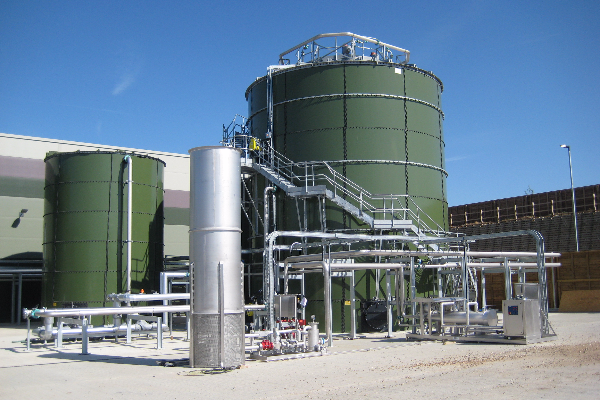Contact Us
For more information on any aspect of anaerobic digestion please use the "contact us" form below.
Contact Us
For more information on any aspect of anaerobic digestion please use the "contact us" form below.


ARL Consulting have worked closely alongside Arla Foods at Aylesbury as part of the team designing and building the UKs' largest dairy.
ARL undertook extensive outline design, tender management, on-going project management, and consultancy services relating to the waste water treatment plant. Arla required that the selected process should include a number of aspects to maximise sustainability as this has been a common theme across the whole dairy site.
ARL proposed an advanced state of the art anaerobic process which allows for the generation of biogas (methane) and its subsequent usage in the on-site energy centre, this ensures all waste to energy aspects are maximised.
In addition to waste water management, ARL also advised how clean process water streams could be treated using RO membrane systems and disinfection to allow re-use in the dairy.
ARL have also undertaken extensive negotiation with Thames Water to ensure the waste water discharged into the Thames Water trade effluent sewer meets the most stringent quality requirements.


ARL Consulting were commissioned to evaluate technical and commercial options for effluent treatment at both of the Glenmorangie whisky distilleries at Tain and Ardbeg, on the Isle of Islay.
This initial feasibility study resulted in the selection of the Tain distillery to be the site for a state of the art anaerobic digestion plant.
ARL Consulting undertook detailed design for the effluent plant and prepared a detailed specification and contract documentation, allowing the project to be tendered on the open market.
ARL undertook detailed negotiation with SEPA to determine the required effluent quality to allow discharge of high quality treated effluent to the Dornoch Firth. The AD plant included beneficial use of the methane in a dedicated biogas boiler to allow displacement of heavy fuel oil.
To view the full Glenmorangie Distillery project details please Click Here.
The technical and commercial benefits of the anaerobic digestion (AD) process can be further explained as follows:
Anaerobic Digestion (AD) has become an increasingly important effluent treatment technique in recent years. Anaerobic digestion involves the breakdown and degradation of biodegradable organic material, ultimately producing methane gas sometimes referred to as biogas.
It should be noted that anaerobic digestion is particularly suited to readily biodegradable feed stocks often reflected in a closer COD:BOD ratio in the influent when compared with less biodegradable material. Anaerobic digestion is becoming increasingly common in the Food and Drink sector, particularly dairy, brewing, distilling and general food processing due to its suitability.
When considering direct discharge to a controlled receiving water, it is very doubtful as to whether AD as a stand-alone process would reduce COD (and/or BOD) to a sufficiently low level to meet any imposed consent. AD is therefore frequently used as an up-front pre-treatment process prior to an aerobic polish (such as MBR) to allow direct discharge.
A distinct advantage of the AD process, when compared with an equivalent aerobic process, is that there is a significant reduction in waste biomass created, typically referred to as sludge. The sludge reduction is due to a greater proportion of the organic material in the influent being broken down (in this case to methane gas) compared with the equivalent aerobic process.